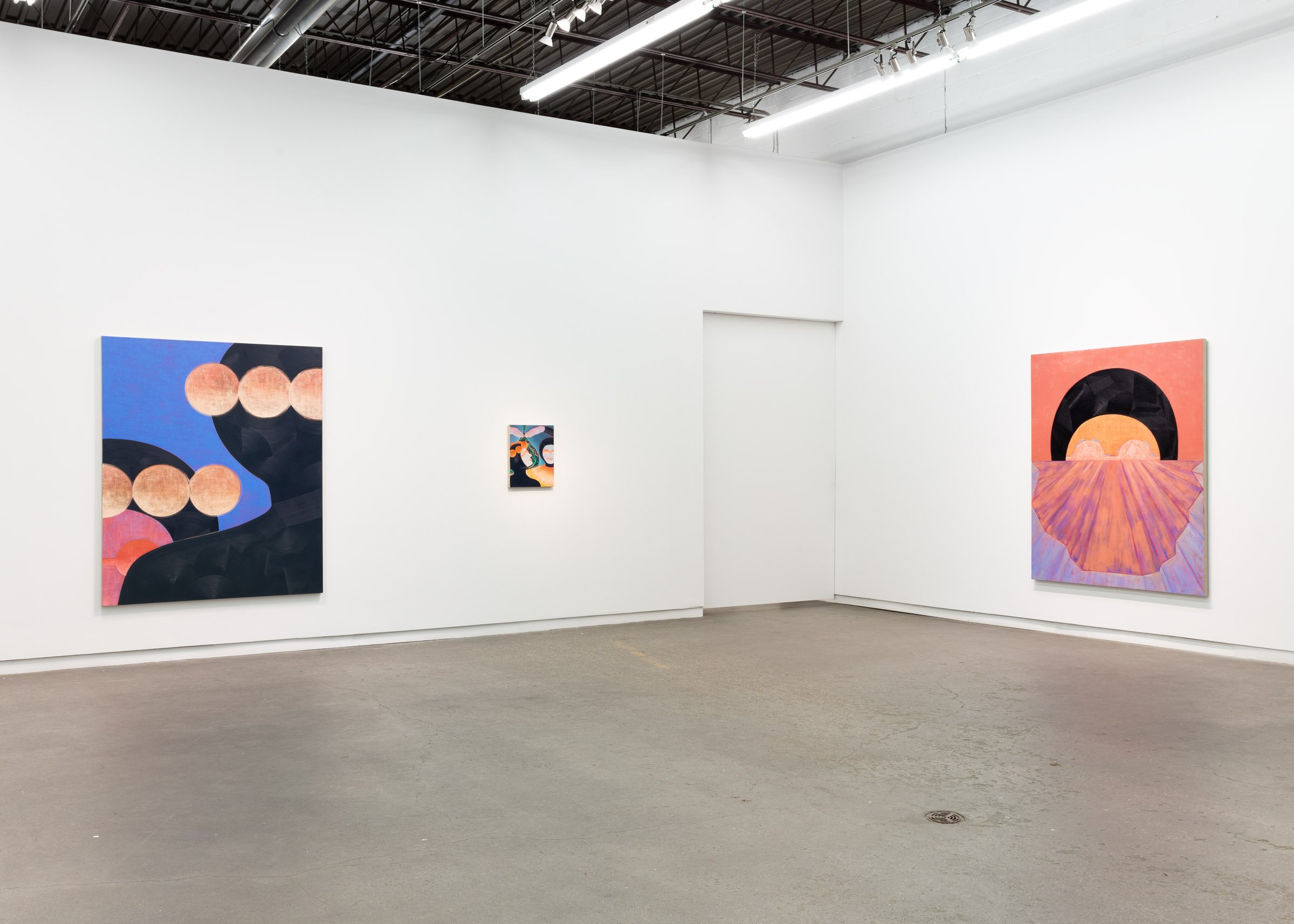Narrated walkthrough of exhibition The Theater of All Possibilities
The Theater of All Possibilities. Daniel Faria Gallery, Toronto. November 5, 2022 - December 10, 2022
Daniel Faria Gallery is pleased to present The Theater of All Possibilities, Kristine Moran’s sixth solo exhibition with the gallery.
The title of this exhibition comes from the name of a 1960’s theatre troupe from San Francisco who would later form a utopian eco-community called Synergia Ranch, just outside Santa Fe. Their name is indicative of the wild optimism and scale of their work, culminating in an infamous project known as Biosphere 2 in Oracle, Arizona. From 1991-1993, eight members of the troupe lived quarantined inside an air-tight glass and steel structure. The biodome endeavoured to imitate earth’s diverse ecosystems with the hopes that human beings could replicate our world in outer space in the future. It contained a living coral reef, a marsh, a rainforest, a savannah, a desert, farming areas, and a micro city, all on three acres of land. Because of the group’s theatre background, the members often took to the stage as a way to air out grievances and work out group dynamics, on their way to a higher aspirational goal. Their story, and a continued interest in the promises and fallacies of utopian communities, along with Moran’s own personal narrative, have informed her latest body of work.
The Madcap Swimmers have been a part of Moran’s work since 2017, when Moran began planning a year-long drive across North America with her family, leaving their home in Brooklyn in search for a new place to live. During this time, she had also taken up long distance swimming as a daily practice, and the swimmers appeared in her work—heavily abstracted at the time—as a group of women searching for a distant, unattainable utopia. In this new body of work, Moran’s paintings have become more representational—the swimmers imbued with further narrative and fiction. Wearing the simple uniform of a black wetsuit, they engage in group activities such as art-making, dance, and theatre, in the tradition of historical intentional communities, as an attempt to manifest their ideal life. While exploring the fine line between ideal and dogma, belonging and conformity, these new works also touch upon themes of play, idealism, tenderness, closeness, and hope.
Within the black paint of the swimmer’s figures are broad brushstrokes in alternating directions, refracting the light and creating hard angles within the soft curves of their bodies. This use of the figure as a framework to explore the material effects of paint is common in Moran’s practice, as is her mining of art history. While her fragmented brushwork is a subtle nod to Cubism, one can also find references to Henri Matisse, Alex Katz, and Charles Baskerville throughout the exhibition. In the small-scale paintings, Theatre Night 1-3, the swimmers, dressed in costumes and crowns, recall Edgar Degas’ dancers, lit from the stage below as they wait for their entrance behind the curtain in a palette of blue and orange.
There are two paintings in the exhibition that serve as both introductions and endings to the narrative. In speaking about Perpetual Search 2, Moran says “I first thought this painting would be a good introduction to the show […] The swimmer is on the lookout for her people, her utopia, after which, several paintings of groups in harmony follows. But in the end, I think it’s actually the concluding painting. It’s when the swimmer thinks it’s better to move on and the search continues.” In Being Utopia the swimmer appears centered, bathed in light, with a landscape reflected back at her. There are no costumes, no theatre, no group dynamics. The most optimistic of the works, it either suggests a beginning or an arrival, an end to the search.
Installation The theater of all possibilities at Daniel Faria Gallery
Installation The theater of all possibilities at Daniel Faria Gallery
Installation The theater of all possibilities at Daniel Faria Gallery
Installation The theater of all possibilities at Daniel Faria Gallery
Installation The theater of all possibilities at Daniel Faria Gallery
Caravan of dreams at high noon, 2022
Perpetual search 2, 2022
Les eventails, 2022
Being Utopia, 2022
The dance, 2022
Theater night 3, 2022
Theater night 2, 2022
Theater night 1, 2022
Detail
Detail
Detail
Detail

















